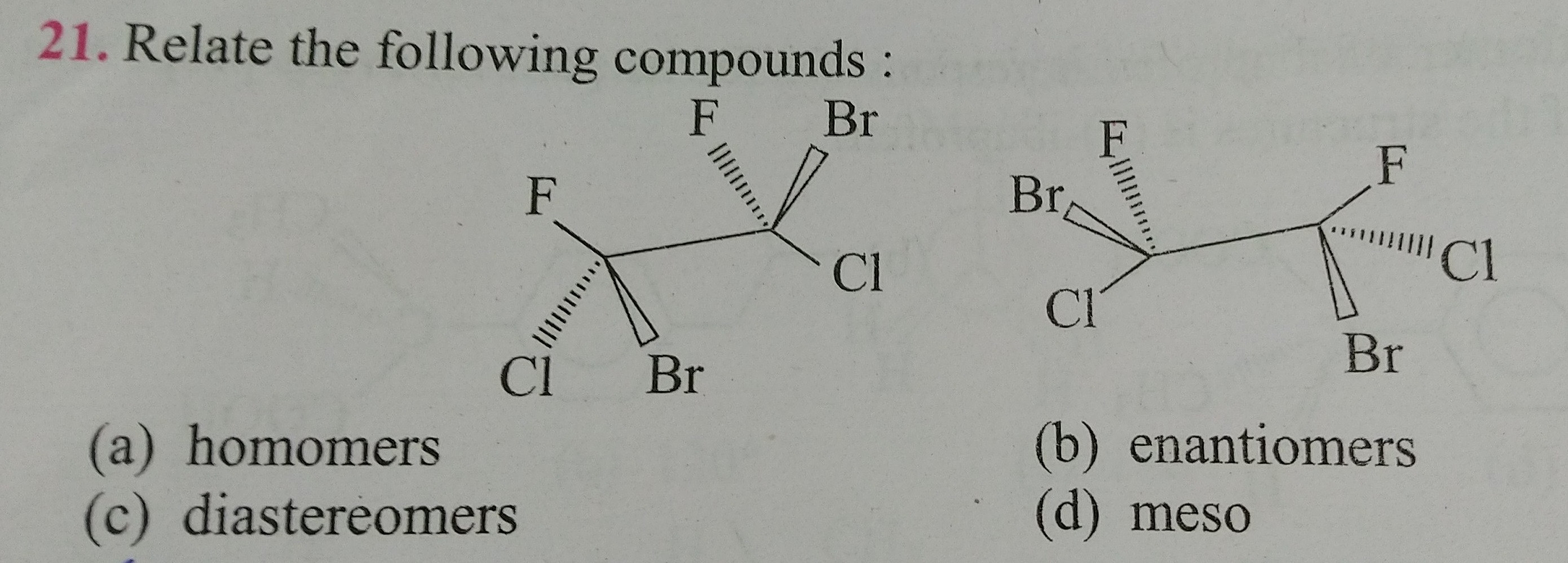I was studying R-S nomenclatures and determining configurations of molecules when I came across a certain problem, which had the 4th priority group on the plan of paper (not on a dash or wedge)
According to this: https://www.masterorganicchemistry.com/2016/10/20/introduction-to-assigning-r-and-s-the-cahn-ingold-prelog-rules/#five
All I need to do to determine the R-S config in these cases is to switch the group in the 4th place with the one in the back, thus "flipping its configuration", then determine the R-S for that molecule and the actual result is the opposite. I know why this works and it has worked for me in the previous problems that I have attempted. However, in this question:
For the left compound (looking at the carbon on the bottom), clearly, $\ce{Br}$ has priority $1$, $\ce{Cl}$ is $2$, $\ce{F}$ is $3$ and the other carbon attached to it is clearly $4$ in priority which is in the plane of paper. Swapping the groups in priority $4$ with that in the back i.e., $\ce{Cl}$, and going from $1,2,3$, I get S as the absolute configuration of the flipped molecule, so the actual configuration should be R. But the answer does say that S is indeed the configuration of both the carbons in the 1st compound and R is the configuration for both carbons on the right molecule.
Why does the swapping of the groups in back and lowest priority not work here?

